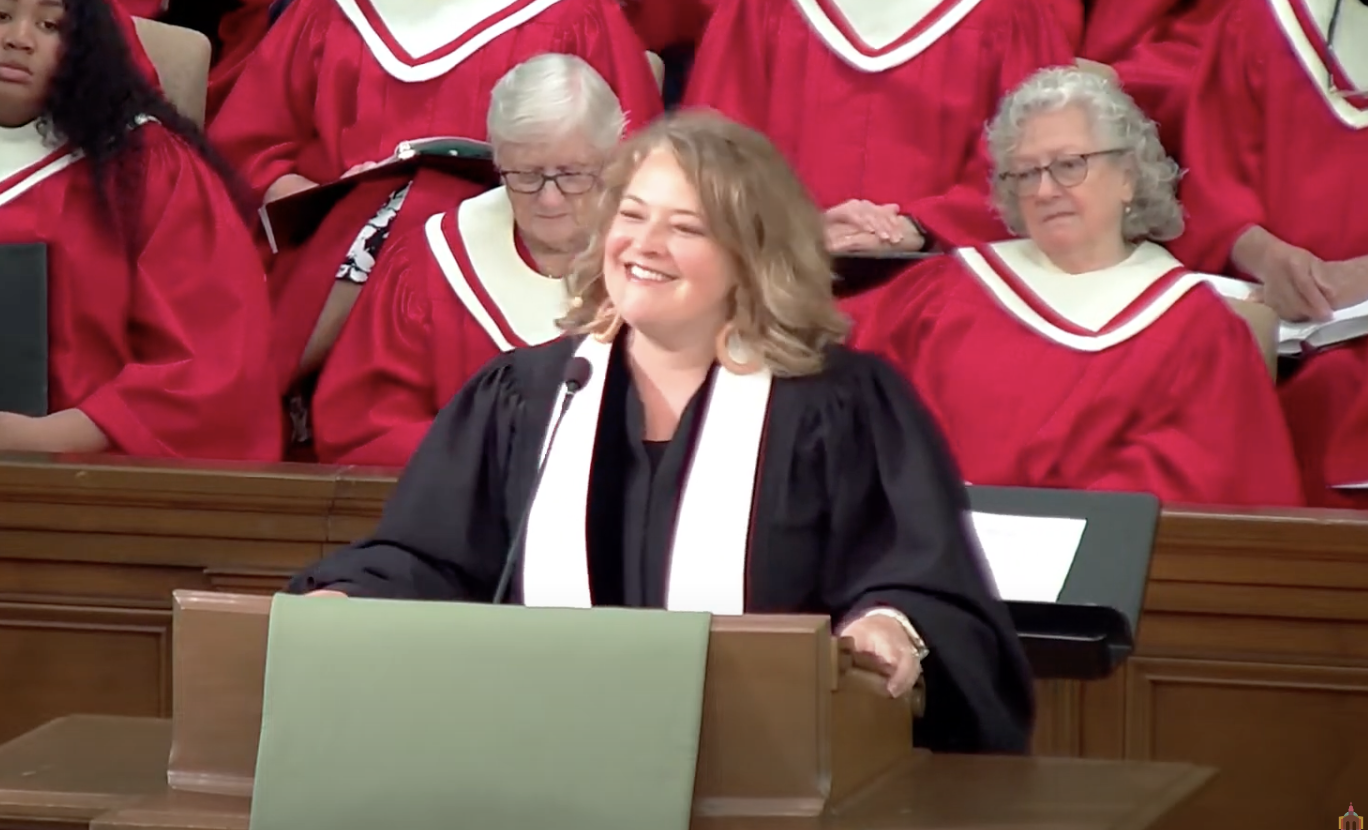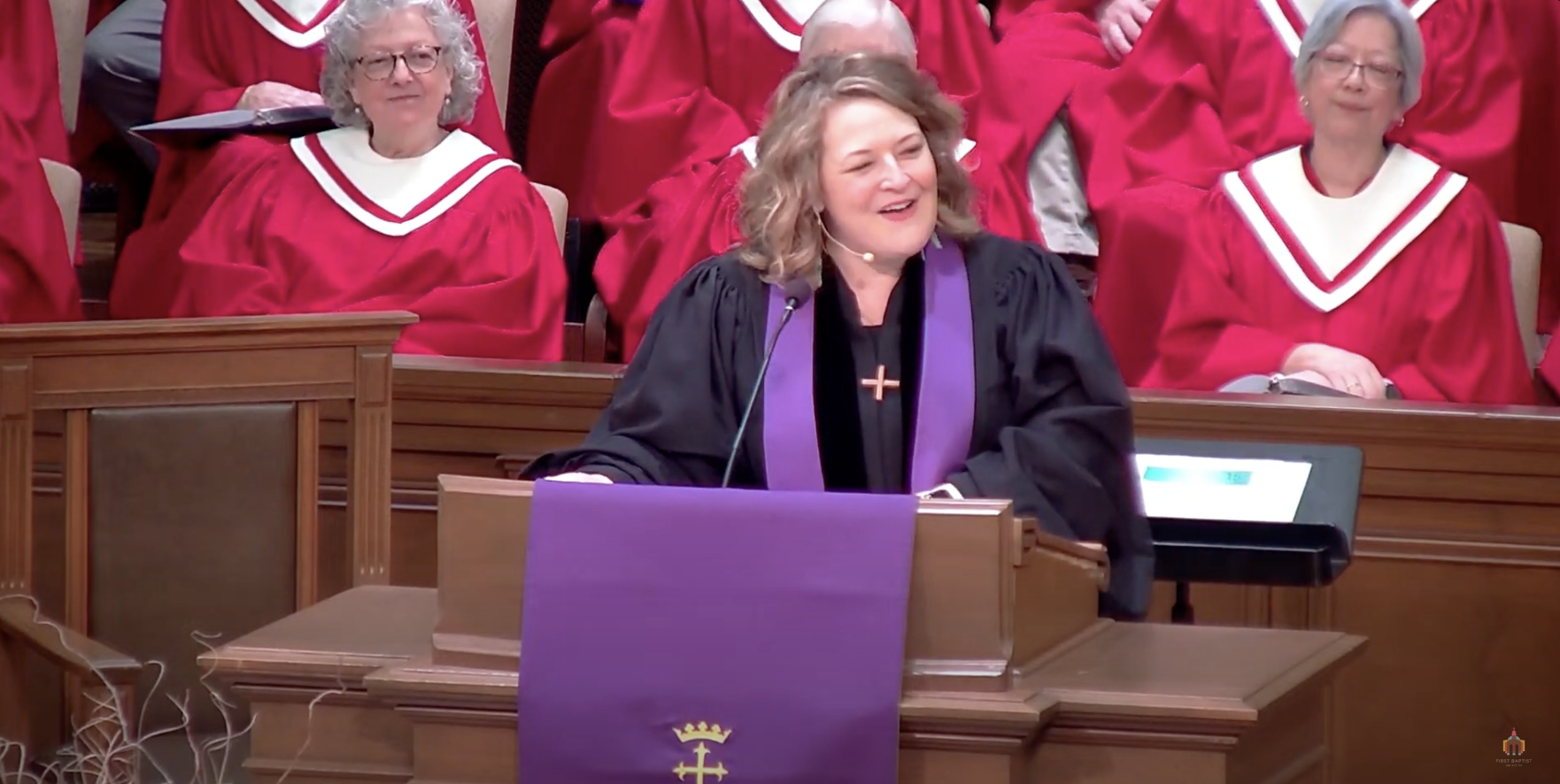I.I had a bit of a chuckle when picking the title for today’s Easter sermon, thinking that perhaps half of you would hear “here and there and everywhere” and think of the Beatles and their love song, and the other half would think of Ted Lasso and its loveable (and colorful) Roy Kent! “Here and there and everywhere” implies things that are ubiquitous. Ever-present. Things you can hardly get away from. Today, that might be pollen, or busted March Madness brackets, or political ads. And perhaps a joyful Easter worship might make the list.
I suspect that many of us here today have been to a worship service on Easter a time or two in our lives. We know what to expect in the story: heartbroken women, fear and exhilaration, and an empty tomb in Matthew; a resurrected Christ, a familiar road, and new recognition in Luke; mistaken identity and tears and testimony in John, and all of this symbolized by the most glorious music you’ve heard since Christmas, a packed room, and enough Easter lilies to get us all sneezing. The lord is risen! He is risen indeed!
Yet the Gospel of Mark doesn’t give us the luxury of putting Easter on autopilot today. Easter joy is neither here nor there nor everywhere. No, this enigmatic writer of the first and shortest gospel gives us a resurrection account that, well, lacks the splendor and happy ending of the rest! Let’s note that it’s the only of the four gospels to tell the story of Jesus’ resurrection without including the resurrected Jesus in it! In this account, there’s no movement from confusion to joy, from misperception to recognition. The first to hear the story ran away in silence, for goodness sakes! And there, Mark ends the entire gospel story. As author Mary Gordon says, “How extraordinary, to end a heroic narrative with the words, ‘they were scared, you see.’” 1 It’s no wonder that the early scribes of Mark’s gospel embellishedit a bit, leavening the mystery with a pinch of certainty and leaving us with alternate endings for the Gospel. The mystery of resurrection is, as Frederick Buechner says, “the darkness of the resurrection itself, that morning when it was hard to be sure what you were seeing.”2
II.Four years ago, author and songwriter Amanda Held Opelt went through a series of losses anyone would call devastating. Multiple miscarriages and two sudden deaths had befallen her – one, her grandmother, and another, her sister, beloved author Rachel Held Evans, in a very public and tragic way. Amidst the aftermath of loss, she spoke of that darkness, saying that the landscape of her life “felt like a town after a tornado had touched down: all the familiar landmarks were gone. The street signs and lamps had been pulled away and thrown far, the houses of friends destroyed, the map of her life unrecognizable. … You know you’re standing in a place you know or knew, but you can’t get your bearings because all of the ways you’ve always navigated your life have been destroyed.”3
To me, Mark’s rendition on the resurrection feels almost as disorienting as a tornado-strewn landscape, doesn’t it? For right here at the center of the story is a witness to paradox and mystery. Responding to resurrection with terror and amazement. Fleeing in fear, not joy. Expecting a sealed off tomb for a dead body, and finding it open and occupied with an angel. Ending abruptly with a call to begin again. It recalls for us the many paradoxes of the life and ministry of Jesus: power in weakness, strength in service, God and human, a kingdom here but not yet, crucified and resurrected. We who cry out in contradiction, “I believe, help then my unbelief!” like the father approaching Jesus with a sick child – we understand this! We are scared, you see. Darkness and destruction and death and despair, here and there and everywhere.
III.We know life is never as easy as a proverbial death on Friday and joy on Sunday. Any claim to the contrary – a Jesus died, but look!, sort of declaration – somehow feels as if it overlooks our sufferings, or glosses over our pains, or tries to smother our sorrows with a nice new Easter outfit to make it all ok. Because here is, well, hard. Here is where tragedies strike and bombs fall and indifference reigns and people die. Here is where one kid doesn’t have enough to eat and another can’t read, where one teenager is bullied for living into their truest self and another can’t look up from their phone, where one adult can’t stop working and another can’t stop drinking, where seniors grieve all that has been lost and relationships are in their final hour. Here feels like the end is everywhere we turn.
And yet. We wouldn’t be here today if the women hadn’t shared the news. Somehow the trauma of death thawed for them. Their terror warmed to possibility, and curiosity overtook their fear. Signposts of their lives with Jesus slowly came into view again. In the midst of certain uncertainty, they found their way to the story of hope amidst all the horrors of the world, to faith in the very place where doubt has taken root. I have to imagine that somehow, someday they went to Galilee and found the risen Christ. Somehow, some way, they understood that when Jesus is nowhere, he is everywhere. When they reached an ending, a shocking new beginning had taken root.
Friends, at the open mouth of the tomb, there is no ending to be found. Rather, the resurrection of the crucified one becomes an astounding new beginning. The story hasn’t ended. Oh no. It has only begun. The first day of the week becomes the first day of the new world.4 So what might be possible in a world where a wholly new power has been loosed upon us, where the powers of this world which end, always, in death have been utterly upended? What might it mean for our way of being human, when failure and death and destruction and violence and control no longer have the final word? What might we learn about our grief when looking at a scarred, living Lord, where the joy of liberation, as Cole Arther Riley says, doesn’t ask us to leave behind our grief in order to participate?5
“Go, tell his disciples that Jesus is going ahead of you to Galilee,” the man told them. In other words, go back to where the story began! And where did the story begin for Mark?“ The beginning of the good news of Jesus Christ.” That good news tells of new life, a kingdom coming, a way and a Christ to follow. Resurrection rounds from end to beginning and back again.
“Why do you look for him among the dead?,” the Easter narrative asks. Jesus is now among the living! He’s no longer past, but present. He’s no longer location-specific, but here and there and everywhere. Everywhere empires are brought down by hope. Everywhere mustard seeds grow into trees that shelter the vulnerable. Everywhere the feast is enough to fill. Everywhere wounds are bandaged by enemies. Everywhere the meek inherit the earth. Everywhere wayward ones are welcomed home again. Everywhere that actual people, with actual lives, and actual heartache, and actual suffering discover that – somehow! – in Christ, all things are made new, and suffering isn’t all there is. Everywhere the worst thing isn’t the last thing. Everywhere an outsider finds liberation. Everywhere two people, despite all evidence to the contrary, find their way to reconciliation. Everywhere peacemakers refuse to be silent in the face of war. Everywhere all things are made new again.
IV.Two weeks before he was to retire on his 65th birthday, my father-in-law had a stroke. Buddy was driving to work, but realized he didn’t know what he was doing, or where he was. Somehow muscle memory kicked in, and he found his way back to his house. When he rang the doorbell, confused, my mother in law, Carolyn, knew something wasn’t right. She put him in the car, took him straight to the ER, and as his doctors later explained to him, by her quick thinking, he was saved from a massive event that could have ended his life. After the shock and surgery and hospital stay, Buddy returned home. We all were so grateful that he was well and on the road to some form of recovery, but as he crossed that familiar threshold back into his house, it felt to him like a tornado had come through and the map of his life was now unrecognizable. So much of how he spent his life was different now. Gone
was the rhythm of work as a contractor that had filled four decades of his life. Gone were his drives around town in the big black truck that now sat quiet in the driveway. Gone was his peripheral vision on one side, and his confidence that he accurately could see and perceive and understand what was happening around him. On the other side of the stroke, I suspect he wondered who he even was anymore.
That first winter was hard. His grief and anger over a dream deferred and a body newly-limited trapped him at home, in the long wait of healing and the wonder if it ever would come. His relationships surely felt the strain.
Now I tell you: Buddy McGee is always hard to shop for at Christmas, but that year, Josh and I racked our brains. What in the world could we get him? Remembering years prior when he’d planted some vegetable seeds on a whim to grow his own salsa ingredients, we landed on a raised garden box, one of those that he could put on his small deck and access without having to descend the stairs to the backyard down below and stoop to cultivate. Josh went back to Knoxville as the weather began to warm, to help Buddy build the box, and fill it with potting soil, and pick out a few packets of seeds to plant. I remember Josh saying to me as he got back home, “I don’t know – that bed may just sit there.” In the weeks that followed, Josh didn’t want to ask too much about it in case Buddy didn’t feel up for working in his new garden bed. A passing comment here and there as spring began to blossom helped us to know that he had planted a seed or two. But it wasn’t until one early summer Saturday when we Facetimed with them that we understood. “You wanna see my garden?,” Buddy had asked with a sly grin.
Right before our eyes, here and there and everywhere were plants. Round tomatoes shooting out of a repurposed Home Depot bucket. Cucumbers sprouting in an old paint can. Peppers, thick and green and crunchy, hanging low in a pot. That garden bed, overflowing with onions and jalapenos – for his salsa, you know! Ferns hanging all around the table. Bright flowers tucked in pots all around. Every square inch of that deck that wasn’t used to sit or move around was full with the most beautiful, thriving garden I believe I’ve ever seen.
In the shadow of his stroke, Buddy began again. The retired builder put his hands back in the dirt, not to build but to plant. Not to make a living, but to make a life. Not to grind and hustle and work his body to pain, but to gently, patiently return his calloused hands again and again to the soil and find with delight that all things had been made new. It was as ordinary and certain a resurrection as I’ve ever seen.
V.In the words of scholar Ched Myers, “for Mark, the resurrection is not an answer, but the final question. There is only one genuine ‘witness’ to the risen Jesus: to follow in discipleship. Only in this way will the truth of the resurrection be preserved.”6 Or from another: “it is up to us, in our lives and our testimony, to tell it and keep it alive.”7
Friends, let’s see what happens. Let’s see what happens when we go to Galilee next. Let’s see what happens when we go back to the beginning, where we are surrounded by the ordinary stuff of life which all looks a bit different in the light of resurrection. Let’s see what happens with our work and our families, our votes and our dollars, our daily habits and seasonal rhythms. Let’s see what happens when it is left up to us. Let’s see what happens when we meet Jesus again, he who is here and there and everywhere all the same.
For Jesus Christ is risen! He is risen indeed.




